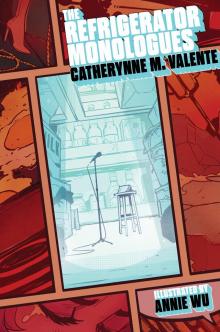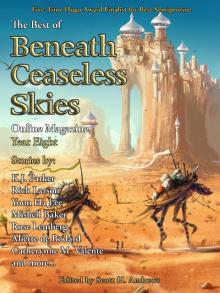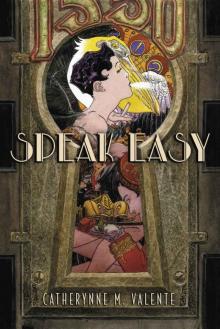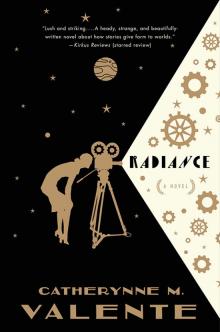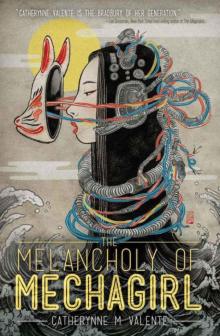


Cairo
Max Rodenbeck
A CENTURY and a half after Sultan Hasan, the Mameluke sultanate fell. In the dark year 1517 the great new empire of the Ottoman Turks over-whelmed Egypt. An occupying army marched into Cairo. The city was again reduced to provincial status, a town ruled by Ottoman governors rather than its own kings. Constantinople, its old rival, had triumphed, and as successive Ottoman sultans embellished their capital on the Bosporus with palaces and domes and minarets, the monuments of Cairo’s lost golden age grew tarnished with neglect in a constant reminder of the city’s fallen state.
Tombs crumbled in the outlying parts of the City of the Dead. Their ruins merged with the gray refuse heaps that now smothered long-abandoned quarters of Misr al-Fustat. Beginning in the sixteenth century, travelers began to report that in this melancholic wasteland crowds of curious Cairenes gathered once a year. They came to a spot where an ancient Coptic martyr was said to have been buried, for it was here that an eerie spectacle unfolded. On the appointed day, the bodies of the dead were said to emerge, to sway for a time in a silent dance, and then to disappear into the ground. As a French adventurer by the name of Carlier de Pinon related in 1579, some of the corpses were whole, some in parts—“as all the inhabitants of Cairo testified, and as I was particularly assured by my host, a man by no means superstitious.”
A century later this danse macabre had somehow moved across the river to the ruins of Memphis.*10 But it no longer fooled some, and certainly not the skeptical Englishman George Sandys, who offered this account:
A day or two after, we crossed the NILUS from Cairo. Three miles beyond on the left hand we came to the place where upon Good Friday the Arms and Legs of a number of men appear stretched forth of the earth, to the astonishment of the multitude. This I have heard confirmed by CHRISTIANS, MAHOMETANS, and JEWS, as seen upon their several Faiths. An imposture, perhaps contrived by Water-men who, fetching from the MUMMIES whereof there are an inconsumable number, and keeping the mystery in their Families, do stick them overnight in the sand, obtaining thereby the yearly Ferrying-over of many thousands of Passengers.
Sandys may have gotten it right. The curious phenomenon had faded from the annals of the city by the eighteenth century.
Nowadays the only mummies to be seen lie safely under glass at the Egyptian Museum. Plagues and famines are, happily, unknown to modern Cairo. Nevertheless, the rites of death keep a powerful hold. Political demonstrations rarely raise big crowds in this cynical city, but the funerals of the famous draw thousands. When the greatest pharaoh of modern times, President Gamal Abd al-Nasser, died in 1970, the 2 million followers of his cortege nearly caused the Qasr al-Nil Bridge to collapse. And Cairo has continued to honor heroes with magnificent tombs: the nationalist leader Saad Zaghloul lies in a splendid neopharaonic temple; Nasser in a neo-Mameluke funerary mosque; President Anwar al-Sadat under a pyramid of cast concrete. (King Farouk, however, was parked in an obscure family tomb in the dead of night, the regime that overthrew him apparently acting on the ancient instinct to punish one’s foes even in the afterlife.)
So casual about other things, Cairenes are strikingly punctilious in the rituals of condolence. Friends not only will drop everything to rush to a funeral but also will mark the end of the forty-day mourning period and the anniversary of someone’s passing. The death notices in Al-Ahram, the city’s newspaper of record, run to thirty solid columns a day and often more: the saying is that a person cannot have died if their death goes unmentioned in Al-Ahram—which incidentally means “The Pyramids.” Ladies of leisure often turn straight to the back of the paper so as to plan their daily agenda of condolence visits. (Besides, the form of the notices is intriguingly thorough. Every member of the bereaved family is listed, along with their place of work and their relation to the deceased. For anyone hoping to unravel the knotted web of family alliances that binds Cairene society, the obituaries are a uniquely penetrating tool.)
If a single trait can describe Cairo’s people, it must be their enduring, life-giving nonchalance. And where does it come from? One drowsy denizen of a Cairo bar, a psychiatrist by day, assured me that obsession with the afterlife—even to the exclusion of daily travails—explains all the city’s mysteries. “Everyone here, you see, lives inside his coffin,” he said. “We are all half mummies…and half gods!”
* * *
*1 Ancient rituals do endure: at the tomb of Sidi Uqba a few hundred yards away, barren and unmarried women gather on Fridays to influence fate by turning seven times around a pillar while casting seven stones over their left shoulders.
*2 The word Shi‘ite comes from the shi‘at Ali, or partisans of al-Husayn’s father, Ali, who was Muhammad’s cousin and son-in-law. Shi‘ites believe in the divine right of Ali’s family to rule—a right contested by the 80 percent majority of Muslims who are Sunnis.
*3 The London Jewish Chronicle of July 20, 1906, carries a letter from one Herman Loewe describing the Jewish mawlid of Ben Ezra in Old Cairo. Local Muslims and Copts enthusiastically joined the celebrations, he says. The rowdy, drunken crowd inside the synagogue “went mad” when the Ark bearing sacred scrolls was opened. The fervent mob knocked the author to the ground in the rush to “snatch and carry away” a sacred scroll. “I crept out of the synagogue, bruised, gasping and dazed,” he continues. “Outside, the feasting was going on as before, but it had now developed into an orgy, and there were some very unpleasant features connected with it….”
*4 The English word garble, incidentally, is Arabic in origin. Gharbala, meaning to sift, passed by way of Cairene spice merchants into the Italian garbellare, which meant to sort or select.
*5 Later—in the fourteenth century—a property speculator had the Fatimid family tomb by the shrine of al-Husayn demolished. The bodies were exhumed and dumped in the dung heaps outside the city walls. The site of the tombs became the Khan al-Khalili, which to this day is Cairo’s chief bazaar for jewelry, handicrafts, and tourist knickknacks.
*6 The only other case is that of Princess Balqish Jehan Raziya of Delhi, who reigned in that city from 1236 to 1239 before being murdered by her jealous brother.
*7 Umm Ali, incidentally, gave her name to a dessert made from hot cream and nuts—perhaps because the pleasure of eating it is akin to the sweetest revenge. A dairy shop only a stone’s throw from the tomb of al-Salih Ayyub makes a specialty of the dish.
*8 Although the whole scale of values has changed, rendering comparison highly speculative, a Fatimid dinar would be roughly equivalent to $200 today. This calculation is based on the work of D. S. Goitein (see Bibliography).
*9 Four years before, cholera had already carried off 36,000 Cairenes.
*10 The word macabre may itself be of Cairene origin, deriving from the Arabic maqābir, one of the army of terms meaning tombs.
Chapter Four
MOTHER OF THE WORLD
We arrived in Cairo on Sunday, June 17, 1481. I had come to see the Cairenes and their deeds. However, if I were to write about its wealth and its people, all of this book would not be sufficient. I swear that if it were possible to put Rome, Venice, Milan, Padua, Florence and four more cities together, they would not equal in wealth and population half that of Cairo.
—Rabbi Meshulam of Volterra, quoted in E. N. Adler, Jewish Travellers
JACOB SAPHIR, a Talmudist who has wandered far and wide collecting alms for the Jewish poor of Jerusalem, is used to trotting about on donkeyback. The year is 1864, and this is the third time in as many years that the Lithuanian scholar has hired one of these mountable taxis to ride the carriage road south to the riverside suburb now known as Old Cairo. Leaving behind the last of the Ottoman rococo palaces that Egypt’s cotton-rich rulers have recently built for themselves, he crosses a bridge over a canal and passes the massive intake tower of a sixteenth-century aqueduct. From here Saphir can see, far off to the right at the tip of the island of Roda, the conical roof of the Nilometer. Perhaps the sight inspires a reverie: local legend holds that a tree by the ancient building marks the very s
pot where the daughter of pharaoh found the infant Moses among the bulrushes. But Saphir’s thoughts may turn instead to more recent events. Barely two years have passed since the Englishman John Hanning Speke announced his sensational discovery of the source of the blessed river at faraway Lake Victoria.
The traveler presses on, skirting the high walls of a Coptic monastery. Off to the left, between the first tumbledown houses of Old Cairo, he spies a long, low structure the Baedeker identifies as the mosque built by Amr ibn al-‘As, the Arab general whose army captured Egypt and founded the city of Misr al Fustat in A.D. 640. An unglamorous building, its rough squareness evokes the simplicity of early Islam. Ashen dung heaps undulate behind the mosque, burying the traces of Amr’s city and stretching to the distant dome of Imam al-Shafi‘i’s tomb, which stands silhouetted against the Muqattam cliffs. Pursuing his course, Saphir arrives at last outside the much-eroded walls of the Roman fort of Babylon. Its moat is long gone; its broad, round towers are sunk in the ground to half their fifty-foot height. Saphir must dismount, trip down a dusty slope, and stoop to pass through a low doorway that gives access to the cramped warren of lanes inside the fort.
For a thousand years a little synagogue has stood in a cul-de-sac at the back of Babylon, sharing the shelter of the Roman walls with a clutter of equally ancient churches and monasteries. It is the oldest and most venerated synagogue in Cairo, but most of its congregation moved long ago to the Jewish Quarter in the city itself. With only twelve impoverished and—as Saphir was to note—scarcely observant Jewish families left in Old Cairo, it is hardly surprising that their temple should appear rather desolate and neglected. But Saphir is undeterred. He is hoping that this time the synagogue’s keepers will let him look into a closet where there is rumored to be a great hoard of ancient manuscripts.
The keepers of the Synagogue of Ben Ezra usher this rare visitor inside. Would he like to touch again the ancient Torah which, they say, was written by the hand of Ezra the Scribe and carried to Egypt by the Prophet Jeremiah to save it from the ravages of Nebuchadnezzar? Saphir declines. It took a great deal of cajoling and baksheesh to see the scroll last time. He would like instead to explore the temple storeroom. But no, say the guardians, it is mamnū‘—forbidden—and besides, the room is guarded by a deadly snake.
Saphir is well prepared. He has, he declares, the permission of the highest rabbinical authorities in Cairo. Not only this, but he is a skilled charmer of snakes, and moreover is protected by an amulet. This he displays—although it is nothing but the commonest of mezuzoth—and then, to greater effect, he jingles his purse. The keepers produce a ladder. Saphir clambers up onto the roof of a tall, narrow chamber. Lowering himself in through a gaping hole, he comes to rest on a dust-smothered mound of fallen masonry and paper. Amid the chunks of stone and wood are crackling leaves of parchment and papyrus, scraps of inscribed leather and crumbling bindings.
SAPHIR WAS TO be disappointed. “After I had labored for two days and was covered with dust and loose earth,” he wrote in his diary, “I picked out several sheets of different old scrolls and manuscripts, but I did not find any use or information in them—WHO KNOWS WHAT LIES UNDERNEATH!—for I was tired of searching.” He was never to know that the hole in the roof opened a panoramic view onto life in the greatest trading city of the Middle Ages.
Saphir had in fact penetrated the intact Geniza, or treasury, of Ben Ezra. Since the synagogue’s last restoration in A.D. 1041, nearly all the papers of the city’s Jewish community*1 had been thrown higgledy-piggledy into this musty, two-and-a-half-story-high storeroom, because by tradition any document in Hebrew letters, or any that might bear the name of God, had to be preserved. Aside from countless pages from sacred texts, the trove contained thousands of more mundane documents, the bulk of them from the tenth- to thirteenth-century heyday of Misr al-Fustat, before most of the city’s Jews made the short move to al-Qahira. Court depositions nestled among deeds and titles and contracts, letters and petitions, business accounts and inventories, religious questions and rulings; in short, the Geniza held the most complete documentation of any medieval society that has ever been unearthed.
Manuscript collectors got wind of Saphir’s find soon enough.*2 As Ben Ezra’s keepers found that their musty papers could be exchanged for fresh cash, scraps and bundles began to filter out of the Geniza. Some quarter of a million fragments in all fluttered away as far afield as St. Petersburg, Paris, Budapest, and Philadelphia. By 1913 not a single snippet was left in Cairo.*3
It took scholars decades to begin making sense of the stash. Their task was complicated by the peculiar writing habits of the Jews of Fustat, who mostly wrote their vernacular Arabic in Hebrew script, but sometimes wrote Hebrew in Arabic script and later, after the arrival of refugees from Spain, wrote occasionally in Ladino, the now-forgotten Yiddish of Iberia, or even in pure Castilian. Gentile documents in Arabic, Coptic, Latin, Syriac, Aramaic, and also Georgian had somehow crept into the Geniza as well, adding to the intricacy of the puzzle.
The paper mosaic that slowly emerged pictures a prosperous and astonishingly cosmopolitan trading society. Ties of family and trade linked Fustat to Andalusia and to Samarkand, to Yemen and even across the Indian Ocean to the Malabar Coast and Ceylon. This was a society where, in 1016, a rabbi of Qairawan in Tunisia could send a letter by the public mails to Fustat inquiring what to do about the inheritance of a native of Baghdad who had died, 4,000 miles from home, in Morocco. Or where the Supreme Cohen of Jerusalem would write to announce the imminent arrival of a trader from Iran bearing the recommendation of a mutual friend, a merchant in Seville. Or where an order would be received from one Nahray Ben Nissim, a Tunisian trader in 120 different commodities, for a number of fine crystal wands for the application of kohl.
The bankers of eleventh-century Fustat issued promissory notes and offered loans at interest, as invoices and deeds from the Geniza show. Doctors made patients sign disclaimers before performing operations. Traders sold on credit. At Fustat you could purchase a one-forty-eighth share of a property in the city. You could buy a slave by installment, as we know from a letter to the chief rabbi of Cairo at the end of the twelfth century—who was none other than the great reformer Maimoun Ibn Musa, better known as Maimonides, author of the Mishna Torah and the Arabic philosophical classic Dalālat al-Hā’irīn or The Guide to the Perplexed. The petitioner asked what action to take against a man who had purchased a slave from him at a price of twelve and a half dinars, to be paid at one dinar a month, and then absconded. We do not know what Maimonides answered. Part of the charm of the Geniza is its piecemeal randomness.
Sometimes the documents thrust the people of Fustat into startlingly sharp focus. We know, for instance, precisely what a certain Ali of Tripoli, a stitcher of animal skins, looked like in 1136. His rental contract—for a house and garden with a fountain “on the shore of the blessed Nile”—comes complete with an elaborate written portrait, a formality that was apparently as indispensable then as the multiple photos demanded by Cairene bureaucrats today. Ali emerges as a middle-aged man of “reddish-brown complexion.” He has a smooth, slightly wrinkled forehead, light hair between his eyebrows, dark brown eyes, a hooked nose and a round beard. His top right incisor is missing.
Under the laissez-faire rule of the Fatimids (969–1171), Fustat—with its growing twin city of Cairo—became the major emporium of the Western world. The Geniza documents evoke the profusion of wares to be found in its eleventh-century bazaars: copies of The Thousand and One Nights (as we know from a bookseller’s inventory), mosquito nets from the Egyptian Delta, reed mats from Alexandria and Basra, opium of Asyut, silk turbans from Muslim Spain and Sicily, Yemeni mattresses, Baghdad cloaks, Armenian carpets, Abyssinian hides and ostrich feathers, Chinese porcelains, perfumed Tunisian soaps, copper vessels from Mosul, swords of Damascene steel, Koran stands of Indian teak, Byzantine brocades, Baltic amber, pearls from Muscat and rubies of Ceylon that might have been shipped by Maimonides’ own brother
David, who traded in precious stones before his tragic drowning in the Indian Ocean. And there were the local manufactures: exquisite colored glass that a Persian traveler praised as being like emeralds in clarity and brilliance; glazed porcelains so fine as to be translucent—including excellent imitations of Chinese Tang and Sung ware; paper—as yet unknown in Europe and so cheap at Fustat that confectioners and fruit sellers wrapped their goods in it; indigo, sugar, and twenty-six varieties of flax, the best of them reserved for the Fustat linen, which was so delicate that a caliph of Baghdad likened it to the white film that lines the inside of eggshells.
The gold dinars minted in Fatimid Cairo made their way to the ends of the known world, becoming the standard currency of the age. The city’s Arabic trading terms accompanied them, and so helped refine the rough, earthy English of Chaucer. There was fustian, the tough blend of cotton—from the Arabic qutn—and linen made at Fustat. There was the dimity of Damietta, the damask of Damascus, the gauze of Gaza, the muslin of Mosul, and the watered silk of Baghdad’s Atabi Quarter known as tabby cloth. There was soft mohair and delicate chiffon; and the camisole, the ream, the sash, the sequin, the mattress and the sofa. A shipment leaving Fustat might comprise jars of camphor or syrup or sherbet; sugar, candy, and spices such as cinnabar, caraway, carob, cumin, and sesame seeds, enough to fill a magazine or arsenal, and certainly to require payment of a hefty tariff. An admiral of the highest caliber might command the vessel. Having consulted his almanac and imbibed a carafe brimming with an elixir of attar of jasmine when the sun reached its zenith, he would have himself massaged with a gentle drubbing before the mizzenmast, to the accompaniment of a lute*4




